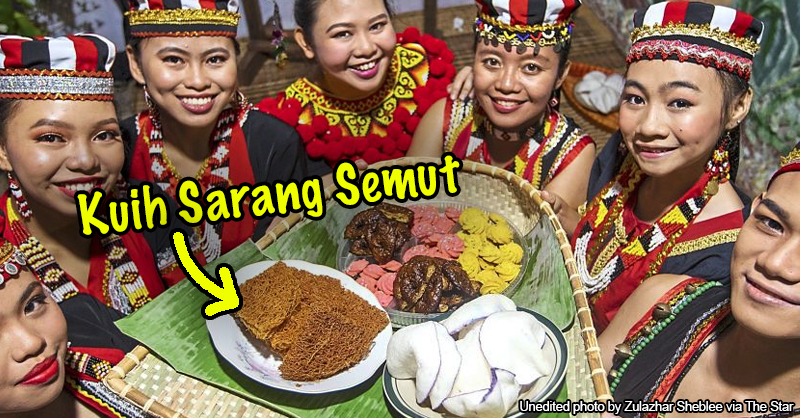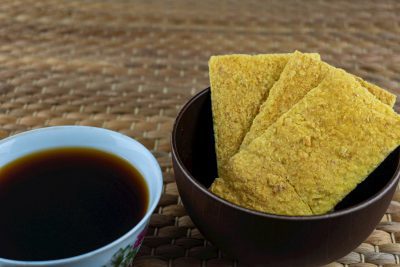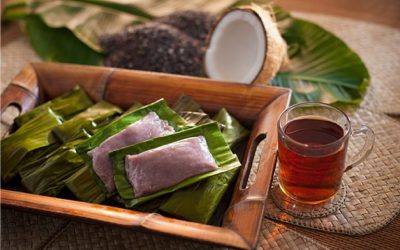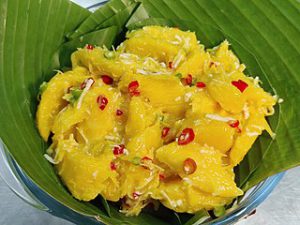Celebrating Harvest Festival with these 5 delicacies

- 67Shares
- Facebook62
- Twitter2
- WhatsApp3
Malaysia is well known for its diverse cultures and celebrations. East Malaysians will witness some of the island’s most significant events to welcome the harvest festival. Tadau Kaamatan is celebrated yearly on the 30th and 31st of May in Sabah and Labuan, whereas Hari Gawai is celebrated on the 1st and 2nd of June in Sarawak.
What Does The Hari Gawai Signify
While both are used to celebrate harvest festivities, their customs, and rituals differ significantly. Tadau Kaamatan honors the connections between creator and created, as depicted in the story of Huminodun, a fair maiden who donated herself by transforming her body into plentiful food and crops that saved humanity. Additionally, during Tadau Kaamatan, Sabah also has its unique beauty pageant.
Whereas, Hari Gawai on the other hand, focuses on offering sacrifices and ceremonies to convey the people’s gratitude for a bountiful harvest and celebrating people, spirits, and other aspects of life.
Harvest Festival Specials
During the harvest festival, special delicacies (that we West Malaysians may not be familiar with) is prepared. Here are the five must-try Sabah and Sarawak delights, as well as tips on how to include mindful snacking practices while enjoying them:
1. Kuih Sarang Semut or Kuih Jala
Sarang Semut, which translates to “ant’s nest” in Sarawak, is produced by frying long thin threads of glutinous rice flour, tapioca flour, and sugar mixture, similar to Kuih Karas in Peninsula Malaysia. The soft and slightly chewy delicacy, also known as Kuih Jala, is popular with children and adults due to its fascinating taste. Take a few moments to bite, chew, and appreciate the unusual crunchy texture of Kuih Sarang Semut for a more pleasurable snacking experience. It may look like an ant’s nest but it definitely doesn’t taste like one!
2. Penganan
Penganan is a typical Sarawak treat produced by deep-frying a mixture of rice flour, sugar, and coconut milk. This small cake has a sweet and somewhat salty flavor, with a crispy surface and a soft, chewy middle – ideal for tantalizing your taste buds, hot or warm. Because it is a fried meal, eat one piece at a time to practice moderation and portion control.
Originally, this was created for Miring or spirit worship. Today, though, it is home-cooked cuisine. A comfort food that keeps the human soul content and at peace with the world and its fellow men. Its main ingredient is freshly ground (hand-pounded is preferred). Gula apong adds a lovely hue and a sweet aroma to it.
3. Hinompuka (Steamed Glutinous Rice Cake)
Hinompuka is a scrumptious Kadazan dish that is wrapped in banana leaves as a sticky rice cake. It has a chewy texture and is sweet and creamy. Some recipes call for coconut milk to create a rich, creamy flavor, while others call for palm sugar to add a sweet kick. Its distinct flavor is also derived from the addition of pandan essence, banana, or shredded yam to the recipe, making it an ideal dessert or snack option for individuals who prefer a more delicate flavor. In addition to adopting portion control, raise your senses by minimizing distractions from your dining environment and slowing down your eating rate.
4. Tebaloi

Image Source Tasteatlas
Tebaloi or sago biscuits are a traditional Melanau dish, although they are also popular throughout Borneo. Tebaloi, which is made with sago flour, coconut, sugar, and eggs, comes in a range of fascinating flavors and colors. Enjoy your tebaloi in small amounts while appreciating the distinct texture, color, and flavor produced by the firewood grill to enhance your gastronomic experience.
5. Bambangan
Last but definitely not the least! Bambangan. This Borneo specialty fruit has a thick brown skin and a distinct aroma and is frequently confused with mango. It can be eaten fresh or pickled with salt, grated bambangan seed, and snips of chili to prepare recipes like Hinava Ginapan for Tadau Kaamatan. Bambangan has a sour, tangy, and distinct flavor, similar to mango or jackfruit. Give each bite your complete attention, whether raw, cooked, or pickled, to extend the snacking experience.
Indulging in these delectable treats during Kaamatan and Gawai is a wonderful opportunity to immerse yourself in the rich cultural legacy of these festivities while gratifying your hunger. Because there is still a lot to taste and appreciate together, remember to be careful of your snacking aims – measure out your snack before eating and attempt to minimize or avoid distractions to genuinely enjoy your snacking experience.
According to a Mondelez International survey on worldwide snacking trends, 78% of individuals nowadays are more likely to spend their time savoring indulgent snacks, and 61% take the time to portion their meals before eating. Are you one of them as well? Visit www.snackmindful.com to discover more about mindful snacking habits and their advantages.
- 67Shares
- Facebook62
- Twitter2
- WhatsApp3











